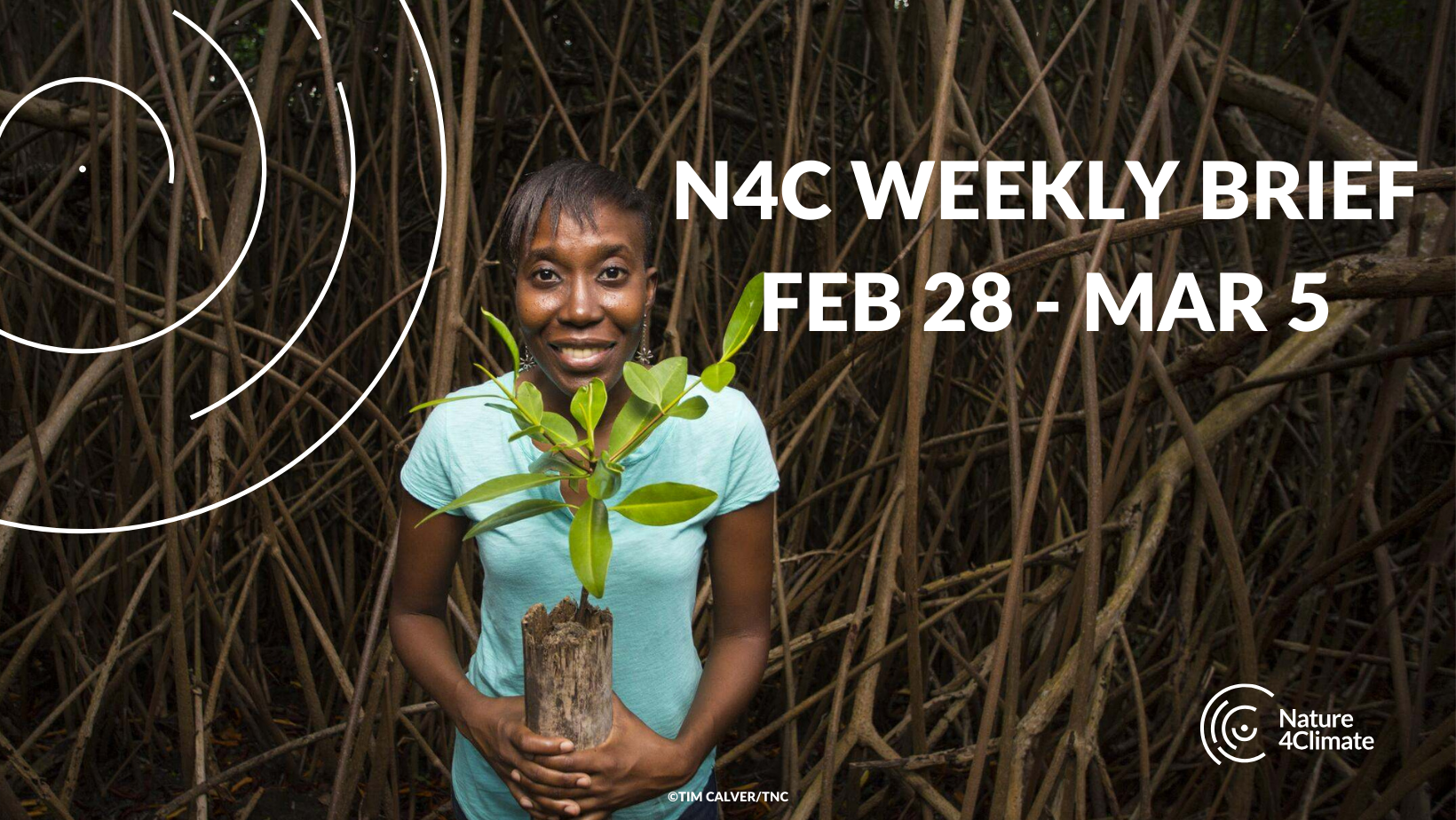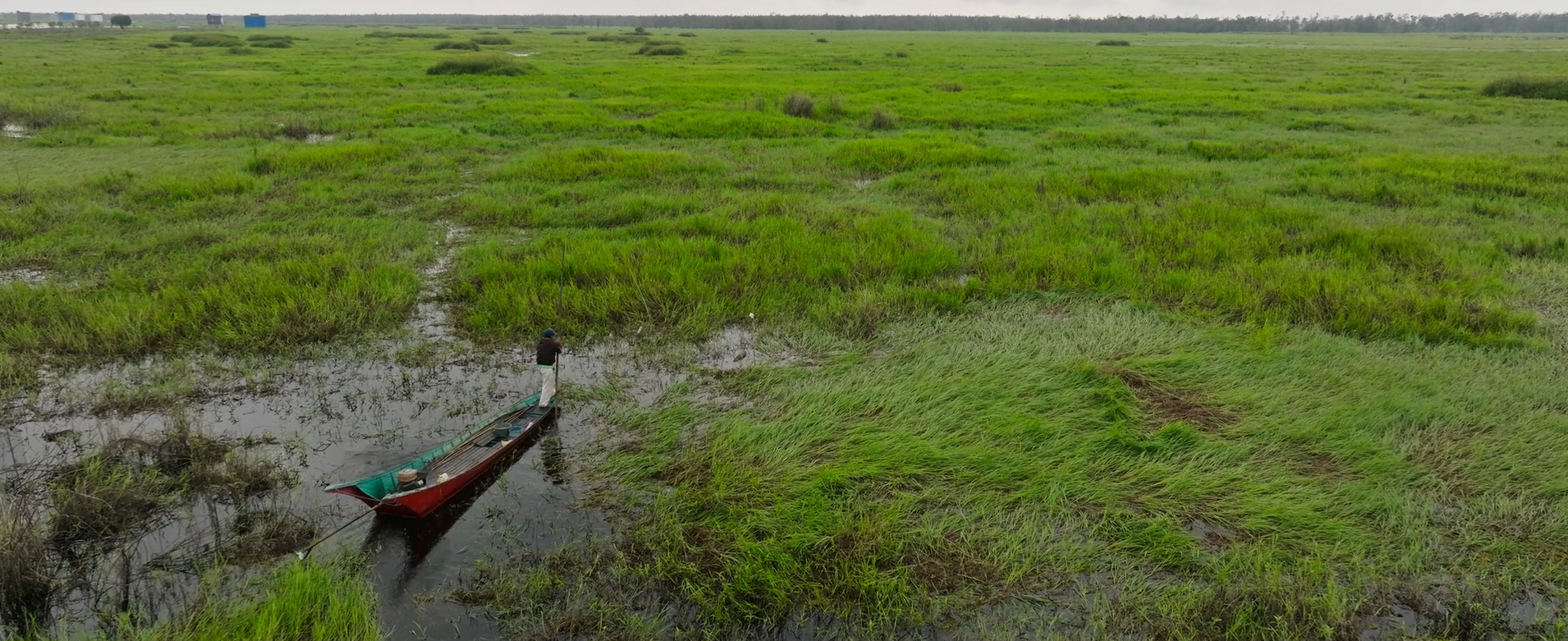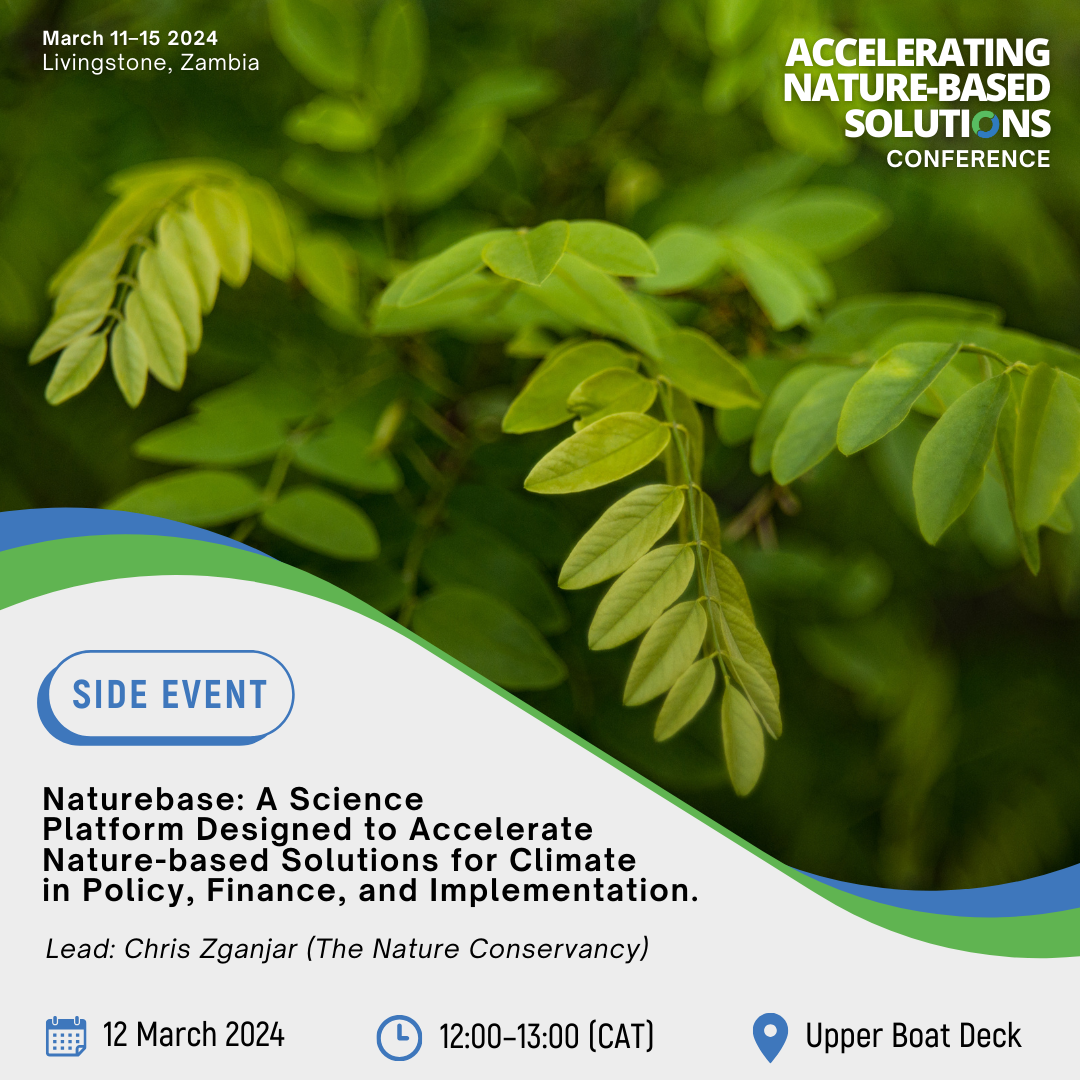
FEATURED NEWS
Guyana to sell first eligible carbon credits under airline emissions scheme
Reuters, Allison Lampert, 28 February
Reuters reports on the recent issuance of 2021 ART-TREES credits to Guyana, for which the country has made the world’s first Paris Agreement corresponding adjustment, which was authorized and reported to the United Nations Framework Convention on Climate Change (UNFCCC). The process fulfills requirements to label the credits as the world’s first that are eligible for use by airlines toward their targets in the 2024-2026 phase of the International Civil Aviation Organization’s (ICAO) global emission reduction program, CORSIA.
In other JREDD news, Project Syndicate publishes a commentary piece from Roselyn Fosuah Adjei, Climate Change Director at Ghana’s Forestry Commission, expressing that her country is poised to make high-integrity available to buyers (again through the ART-TREES standard), and that buyers in the Global North should be willing to pay a fair price. Reuters reviews the efforts to assess the quality of carbon credits to build more confidence in the voluntary carbon market.
JBS faces ‘greenwashing’ lawsuit as opposition mounts to NY listing
Financial Times, Michael Pooler and Madeleine Speed, 4 March
Financial Times covers the announcement that New York state’s Attorney General is initiating a lawsuit against Brazilian meatpacker JBS for misrepresenting its environmental impact with “fake sustainability claims to boost sales”. A large part of the lawsuit focuses on JBS setting a net zero goal for 2040, but not to releasing a realistic plan to achieve that goal. A significant amount of the company’s emissions come from deforestation in Brazil to clear new land for cattle grazing. Mongabay shares a new Global Witness report that finds JBS and other large Brazilian meatpackers are fueling the rapid deforestation across the Brazilian Cerrado, where nature loss is occurring faster than in the Amazon rainforest. The Brazilian Report covers a new World Economic Forum report that identifies why conserving the Cerrado’s natural resources are critical for the climate and people, while also sharing how economic development doesn’t need to slow down to achieve those goals. IR Magazine carries an article from Emma Thomson, Global Canopy’s Forest 500 project lead, urging investor relation officers to see deforestation as a serious threat to their financial performance.
SBTi Unveils Reports to Boost Corporate Climate Efforts Beyond Traditional Scope
ESG News, 29 February
ESG News reports that the Science Based Targets initiative (SBTi) has published two new reports focused on the role corporate actors should play in supporting climate action beyond their operations and supply chains – commonly known as Beyond Value Chain Mitigation (BVCM). Supporting BVCM climate action allows companies to help accelerate the global net-zero transformation by enabling other social actors to avoid, reduce or remove emissions when done in parallel with companies cutting their own value chain emissions. Bloomberg reports on industry reactions to the guidance, with many acknowledging that while the reports are strongest endorsement yet by SBTi of the need for BVCM investment, they fall well short of providing a compelling business case, particularly at a time when many companies are stepping back from voluntary action. Wildlife Conservation Society shares their Executive Director’s perspective on SBTi’s view of BVCM action, highlighting that more BVCM action can help end the ‘free-rider’ relationship the private sector has now with nature’s ecosystem service benefits without relying on carbon credits to ‘offset’ their companies’ emissions.
Forest Investors Debate What to Do With All Their Trees: Timber or Carbon Credits?
Wall Street Journal, Yusuf Khan, 4 March
Wall Street Journal reviews the growing interest amongst investment managers in utilizing their forest land assets as carbon credit producers and not just sources of forest products or timber. The article digs into the different types of trees and types of credits that large forest investors consider when developing the strategy for how they manage their forest assets.
South African city copes with climate change by chopping down trees
The Washington Post, Katharine Houreld, 28 February
The Washington Post covers South Africa’s efforts to cut down, and even burn, trees to help manage its water resources and improve climate resiliency. While the concept of cutting down trees sounds counterintuitive to dealing with climate change, the effort is focused on clearing out invasive trees and vegetation that are sucking up South Africa’s limited water resources. Cape Town, South Africa has been stricken with droughts and severe water shortages in recent years, motivating the country to remove invasive plant species that absorb much of the local water supply and to allow native trees and brush to regrow in their place.
COP28 – NATURE TALKS
At COP28, the Nature Positive Pavilion promoted Nature Talks, a platform where influential speakers and experienced leaders converged to deliver impactful TED-style talks on leading nature for climate action. Diverse experts shared transformative ideas, innovative solutions, and personal insights that inspire change and ignite conversations surrounding the crucial role of nature in addressing climate challenges for people and the planet.
In this talk, we invite you to listen to Ed Goodall, Head of Intergovernmental Engagement at Whale and Dolphin Conservation.
SPOTLIGHT – Accelerating Nature-Based Solutions Conference
The Global EverGreening Alliance, the Government of Zambia, AFR100, African Natural Capital Alliance (ANCA), FSD Africa, and the UN Decade on Ecosystem Restoration, is hosting the world’s largest land restoration programming conference, bringing together NGOs, governments, the private sector, technical and scientific experts, and community representatives. Nature4Climate will be represented at three events during the conference in Zambia.
FOR YOUR INFORMATION
Human Rights Watch publishes their research on the Southern Cardamom REDD+ Project and the alleged abuses of Indigenous rights the project has led too within Cambodia. The Wildlife Alliance vigorously rebuked the findings in its response.
Green Finance Institute shares an update to its analysis of the financial risks posed by nature degradation and the erosion of ecosystem services, both domestically and globally, to the real economy and financial sector in the UK.
US Nature4Climate releases video of a briefing call focused on the 1st National Nature Assessment currently being conducted by the U.S. Global Change Research Program (USGCRP). Dr. Tessa Francis, Chief of Staff for the National Nature Assessment at the USGCRP was the primary speaker at the briefing.
WWF and Climate Focus share Food Forward NDCs, a guidance tool to support the enhancement and implementation of NDC ambitions for agriculture and food systems transformation. It aims to help countries to strengthen their NDCs by providing easy and accessible content to identify policy measures and practices and information about their climate change mitigation, adaptation and sustainable development benefits.
Coalición por una Producción Sostenible publishes a study assessing the possible effects of the European Union’s EU Deforestation Free Regulation (EUDR) on Peru’s coffee and cocoa value chains.
Nature Tech Collective shares its nature fintech sector map, which is a distillation of interviews conducted in 2023 with financial institutions, banking experts, ecosystem and biodiversity scientists, nature VCs, nature fintech startups, and others.
Inclusive Development International launches a new open-access online tool that provides a comprehensive picture of global palm oil supply chains, linking global corporations to the on-the-ground impact of their palm oil consumption.
FAIRR publishes a new report sharing a list of solutions to mitigate environmental impacts from livestock production, incorporating the interdependencies between climate and nature.
Better Worlds releases a new web series and podcast called ‘Nature IS’. The first episode discusses biomimicry, arguing that we have a lot to learn from nature’s 3.8 billion years of biological intelligence.
CASE STUDY
N4C is compiling an index of NBS case studies, together with an interactive map, to highlight action on the ground. Each week, we will be choosing a case study to present, to help give concrete examples of work being done to bring NBS theory into practice.

Katingan-Mentaya Peatland Restoration and Conservation Project
WHERE: CENTRAL KALIMANTAN, INDONESIA
TYPE OF NCS SOLUTION: MANAGE
This project aims to restore and conserve 149,800 ha of intact peat swamp forest, and bring a further 115,869 ha of mixed use community buffer zone under sustainable management. Prior to the project, the area was intended for development into an industrial timber plantation. Organizers developed a methodology to quantify carbon emission avoidance in tropical peatlands, which was used to get VCS certification for the project. The project also creates capacity building for local communities on sustainable use of peatlands and develops land-use plans.
NUMBER OF THE WEEK – 3.1 MtCO2e/yr
The carbon dioxide emissions that could be mitigated by reforesting South Africa with native species. The country has sought to cut and burn down more trees that are not native to the region to help free up water resources for its population and to let native species come back to their original habitats. See more details on the potential for natural climate solutions in N4C’s naturebase.
GOOD NEWS
Culture and conservation thrive as Great Lakes tribes bring back native wild rice
Wild rice or manoomin is an ecologically important and culturally revered wetland species native to the Great Lakes region of the United States and Canada, which once covered thousands of acres and was a staple for Indigenous peoples. Over the past two centuries, indiscriminate logging, dam building, mining, and industrial pollution have decimated the wild rice beds, and today climate change and irregular weather patterns threaten the species’ future. In recent years, native tribes and First Nations, working with federal and state agencies, scientists and funding initiatives, have led wild rice restoration programs that have successfully revived the species in parts of the region and paved the way for education and outreach. Experts say more research and investments must be directed towards wild rice, and such initiatives need the support of all stakeholders to bring back the plant.
